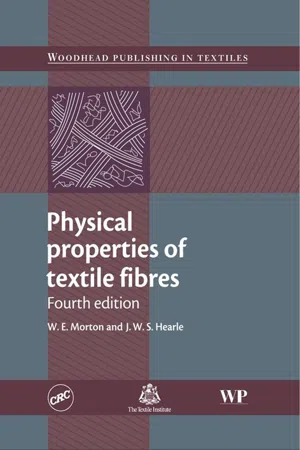Physics
Resistance
Resistance is a measure of how much a material or device impedes the flow of electric current. It is measured in ohms and is influenced by factors such as the material's conductivity, length, and cross-sectional area. In a circuit, resistance causes a voltage drop and dissipates energy in the form of heat.
Written by Perlego with AI-assistance
Related key terms
Related key terms
1 of 4
Related key terms
1 of 3
11 Key excerpts on "Resistance"
- eBook - ePub
OAT Prep Plus 2023-2024
2 Practice Tests + Proven Strategies + Online
- (Author)
- 2023(Publication Date)
- Kaplan Test Prep(Publisher)
ε. Thus, a real-world cell provides less voltage than an ideal cell.Resistance
Resistance and Ohm’s law
Resistance (R) can be thought of as the opposition to the flow of an electric current that occurs within a conductor. This opposition takes the form of an energy loss or drop in potential. Ohm’s law states that the voltage drop across a resistor is proportional to the current it carries, with R being the proportionality constant known as Resistance:This equation applies to a single resistor within a circuit, to any part of a circuit, or to an entire circuit. Note that the current is unchanged as it passes through the resistor since no charge is lost inside the resistor. The SI derived unit of electrical Resistance is the ohm (Ω).Resistance of a conductor
The Resistance of an object depends on its size, the type of material from which it is made, and its temperature. Resistance of a wire depends on three factors: length, cross-sectional area, and resistivity. These three factors give the following equation for Resistance of a conductor:where R is Resistance in ohms, L is the length in meters, A is the cross-sectional area in m2 , and ρ is the resistivity of the material. Temperature is also a factor in determining Resistance.Length (L)
Resistance is directly proportional to length of a wire. A longer conductor means greater Resistance because there is a longer path that current-carrying electrons must travel. For example, consider two wires that are identical in every respect except that one is twice as long as the other. The longer wire will have twice the Resistance of the shorter wire because the electrons need to travel twice as far.Cross-sectional area (A)
The Resistance of a conductor is inversely proportional to its cross-sectional area. An increase in cross-sectional area causes a decrease in Resistance because there is an increase in the number of conduction paths electrons can follow. For example, consider two wires that are identical in every respect except that one has twice the cross-sectional area of the other. The thinner wire will have twice the Resistance of the thicker wire. - eBook - ePub
College Physics Essentials, Eighth Edition
Electricity and Magnetism, Optics, Modern Physics (Volume Two)
- Jerry D. Wilson, Anthony J. Buffa, Bo Lou(Authors)
- 2019(Publication Date)
- CRC Press(Publisher)
Resistors in use A printed circuit board, typically used in many electrical devices, can include resistors of different values. The striped cylinders are resistors; their banded color code indicates their Resistance value in ohms.But how is Resistance quantified? For example, if a large voltage applied across an object produces only a small current, it is clear that the object has a high electrical Resistance. Keeping this notion in mind, the electrical Resistance of any object is defined as the ratio of the voltage applied across it to the resulting current in it, orR =( electrical Resistance definition )Δ VI(17.2) SI unit of Resistance: volt per ampere (V/A), or ohm (Ω )Resistance units are volts per ampere (V/A), named the ohm (Ω ) in honor of the German physicist Georg Ohm (1789–1854), who investigated the relationship between current and voltage. Large values of Resistance are expressed as kilohms (kΩ ) and even megohms (MΩ ). A schematic circuit diagram showing how, in principle, Resistance is determined is illustrated in ▼ Figure 17.10 .▲ Figure 17.10 Measuring Resistance In principle, any object’s electrical Resistance can be determined by dividing the voltage across it by the resulting current through it.For some materials, the Resistance may be constant over a range of voltages. A resistor that exhibits constant Resistance is said to obey Ohm ’s law , or to be ohmic. The law was named after Ohm, who found that many materials, particularly metals, possessed this property. A plot of voltage versus resulting current for an ohmic material is linear with a slope equal to its Resistance R (▼ Figure 17.11 ). In most of our study, it will be assumed that the resistors are ohmic. Remember however, that current will be directly proportional to the applied voltage only if R is constant - eBook - ePub
Electrical Engineering
Fundamentals
- Viktor Hacker, Christof Sumereder(Authors)
- 2020(Publication Date)
- De Gruyter Oldenbourg(Publisher)
Voltage can cause electric current: If there is a voltage between two particles and these two particles are connected through a conductor, current flows. (More specifically: There is an electric field between the two particles. This field exerts force on the free charge carriers, which causes them to move.)Voltage is connected to force: Two particles, with an electric voltage between them, carry a different number of positive and negative electric charges, respectively; therefore, they are positively and negatively charged relative to one another. The respective surplus charges exert forces of attraction on each other.Technical generation of voltage:-
Electric charges are separated by induction (generator, transformer) due to magnetic energy.
-
A chemical reaction separates electric charges in the galvanic cell.
-
Heat separates electric charges in the thermocouple.
-
Radiant energy of the light separates electric charges in the photovoltaic cell (industrially in photovoltaic panels).
-
Pressure separates electric charges in some piezoelectric crystals (e.g. quartz).16
1.10 Ohm’s law
Ohm’s law describes a linear correlation in certain electric conductors between voltage drop V and the electric current I which is flowing through the conductors at constant temperature:V = R ⋅ IV Voltage in VR Electrical Resistance in Ω (Ohm)I Electric current in AThe Resistance R ideally17 is constant, regardless of the magnitude of the current. If this is the case, we talk about linear circuits.1.10.1 Resistance R and conductance G
The ResistanceRof a conductor depends on the material and the spatial dimensions of the conductor. To measure the resistivity of the material, the specific Resistance is defined as the Resistance of a cube with edges 1 m in length.Figure 1.16: Resistance R.The unit of Resistance is a quantity derived from I andV. A conductor has a Resistance of1 Ωwhen a voltageV = 1 Vdrives a current ofI = 1 Athrough the conductor.18The technically used resistors can generally be divided into two groups: wire resistors and sheet resistors. The materials of the wire filaments or coatings, usually attached to cylindrical ceramic bodies, have specific Resistances with low temperature dependence. The Resistance is determined by measuring current and voltage. - eBook - ePub
- Trevor Linsley(Author)
- 2014(Publication Date)
- Routledge(Publisher)
Resistance measured in ohms, to commemorate the famous experimenter George Simon Ohm, who was responsible for the analysis of electrical circuits. The symbol Q represents an ohm.In 1826, Ohm published details of an experiment he had made to investigate the relationship between the current passing through and the potential difference between the ends of wire. As a result of this experiment he arrived at the following law, known as Ohm’s law. ‘The current passing through a conductor under constant temperature conditions is proportional to the potential difference across the conductor’.V = I × R (V)Transposing this formula, we also haveAn electric heater when connected to a 230 V supply was found to take a current of 4 A. Calculate the element Resistance.EXAMPLE 1
The insulation Resistance measured between phase conductors on a 400 V supply was found to be 2 MΩ Calculate the leakage current.EXAMPLE 2
When a 4Ω resistor was connected across the terminals of an unknown d.c. supply, a current of 3A flowed. Calculate the supply voltage.EXAMPLE 3
V = I × R (V)V =3A × 4Ω = 12VResistivity (symbol p — the Greek letter ‘rho’)
The Resistance or opposition to current flow varies for different materials, each having a particular constant value. If we know the Resistance of say one metre of a material, then the Resistance of five metres will be five times the Resistance of one metre.The resistivity of a material is defined as the Resistance of a sample of unit length and unit cross-section. Typical values are given in Table 8.3 - eBook - ePub
- Joy Manners(Author)
- 2020(Publication Date)
- CRC Press(Publisher)
Question 3.11 A voltmeter connected across a battery reads 11 V. When a 10 Ω load is placed across the same battery, a current of 1 A flows. Calculate the internal Resistance of the battery. ■Other sources of electromotive force
We have discussed internal Resistance in the context of chemical cells and batteries, but in fact, the idea is far more general. Any source of electromotive force — e.g. electrical power supplies or dynamos — will have a maximum current that it can supply. Although the physics that dictates this maximum may differ from device to device, there is always some limit to the current that can be drawn, and conventionally this is characterized as an internal Resistance.Figure 3.26 For use with Question 3.9.5 Currents in the everyday world
In Sections 2 to 4 of this chapter, we have developed a number of ideas about current flow through the simplest of circuit elements — the resistor. In this section we will look at a number of examples of the way in which electric currents affect our world, both in technological applications and in nature.5.1 Resistance sensors
In Section 3.3 we pointed out that the resistivity of a material was constant ‘…so long as the temperature and the strain in the material remain constant’. A Resistance sensor is a resistor, or a collection of resistors, which responds to changes in its environment by changing its Resistance. Resistance sensors exist that respond to changes in temperature, strain, pressure, wind speed, and light level, amongst other factors. We will take a closer look at the platinum Resistance thermometer.The platinum Resistance thermometer
Figure 3.27 Some platinum Resistance thermometers.The notation p(T) reminds us that ρ is a function of T.A platinum Resistance thermometer (PRT) is simply a piece of strain-free platinum with some electrical contacts (Figure 3.27 ). If the temperature-dependent resistivity of platinum is ρ(T), then the (temperature-dependent) Resistance of a piece of platinum wire of length L and cross-sectional area A - eBook - ePub
- Ahmad Hemami(Author)
- 2017(Publication Date)
- CRC Press(Publisher)
Ohm’s law is probably the most fundamental as well as important relationship that defines the relationship between voltage and current in a circuit. Try to master the meaning of Ohm’s law before continuing any further.Ohm’s law: One of the most important laws of electric circuits: relationship between voltage across a component, the current in the component and the electric Resistance exhibited by the component to the flow of electricity. For a simple resistor it is V = RI .Ohm’s law states that if the current in a resistor with a Resistance R is I , then the voltage across the resistor (the voltage between the two ends of the resistor) is V , such thatV = R I(5.1) where R is in ohm, I is in amp, and V is in volt.This law also implies that if a voltage of V volt is applied to a Resistance of R ohm, then the current is I ampere; that is, the current, voltage, and Resistance between two points are always related to each other.Example 5.1 A lightbulb filament and the wires connecting it to a 12 V battery altogether have a Resistance of 5 Ω. Find the current is in the lightbulb filament?SolutionSubstituting for the voltage and the Resistance in Equation 5.1 leads to12 = 5 × II = 12 ÷ 5 = 2.4 AExample 5.2 If the same lightbulb as in Example 5.1 is connected to a 1.5 V battery, what is the current?Solution Resistance of the lightbulb does not change, because it is the physical property of the metallic wires involved. Thus,There are other meanings embedded in Ohm’s law, which we need to pay attention to.I = 1.5 ÷ 5 = 0.3 ANote, however, that when a filament is warmed and its temperature has changed, its Resistance also changes. Here, for simplicity, we have assumed that the change in temperature is not high enough to affect the Resistance.- The relationship between the voltage across a resistor and the current through that resistor is linear. That is, if the voltage doubles, the current doubles, too.
- By the same token, if the Resistance of the resistor does not change, then, if the voltage drops in value (decreases), the current also decreases. Similarly, if the voltage increases, the current increases.
- eBook - ePub
Circuit Analysis with PSpice
A Simplified Approach
- Nassir H. Sabah(Author)
- 2017(Publication Date)
- CRC Press(Publisher)
2 Fundamentals of Resistive CircuitsObjective and Overview
This chapter introduces (1) the two ideal circuit elements of dc circuits, namely, resistors and sources; (2) the two basic circuit laws, namely, Kirchhoff’s current law (KCL) and Kirchhoff’s voltage law (KVL); and (3) the two basic connections between circuit elements, namely, series and parallel connections.The nature of electrical Resistance is first explained using a simplified model, following which, the very basic Ohm’s law defining an ideal resistor is presented. Ideal, independent and dependent, voltage and current sources are then discussed, with emphasis on their defining and essential properties.Kirchhoff’s laws are introduced as laws derived from conservation of charge and conservation of energy, but which provide a much simpler means of analyzing circuit behavior. Series and parallel connections of circuit elements are then discussed and linked to Kirchhoff’s laws.PSpice simulations are introduced in this chapter and are included in all numerical examples, whenever appropriate, to illustrate and verify the results of analytical solutions. This chapter concludes with a very helpful problem-solving approach and illustrating it with examples.⋆ 2.1Nature of ResistanceConcept: Resistance is fundamentally due to impediments to the movement of current carriers in a conductor under the influence of an applied electric field.A sample of a metallic conductor typically consists of a large number of crystals in which the rest positions of the metal atoms at 0 K are arranged in a regular manner that is characteristic of the type of crystal. At temperatures above 0 K, (1) the crystal atoms vibrate, in randomly oriented directions, about their rest positions, with an amplitude of vibration that increases with temperature, and (2) some electrons, referred to as conduction electrons have sufficient energy to detach from their parent atoms and move freely in the crystal, in randomly oriented directions, at thermal velocities of the order of 107 - eBook - ePub
Analog Electronics Applications
Fundamentals of Design and Analysis
- Hernando Lautaro Fernandez-Canque(Author)
- 2016(Publication Date)
- CRC Press(Publisher)
Passive components in an electric circuit are components that do not add energy to the circuit. They usually dissipate or transform energy. There are different types of passive components according to their relationship between their voltages and currents.The potential difference (V) across the terminals of circuit component is proportional to the current (I) flowing between them. V proportional to IThis proportionality varies for different components. We can identify the type of passive component according to its relationship between the voltage and the current. Some of the most common types of components found in an electric circuit are resistors, capacitors, and inductors. In this section we can look at some of the characteristics of these three types of passive components.2.5.1RESISTANCEThe Resistance is an electrical characteristic that describes how a component opposes the circulation of current. If the ratio of voltage to current provides a constant value then the passive component is known as a Resistance or resistor. In a Resistance, the relationship between voltage and current is defined in Ohm’s law. This states that the flow of electric current through a Resistance is proportional to the applied voltage. Ohm’s law can be expressed asLet us illustrate Ohm’s law with an example. EXAMPLE 2.4V = R ⋅ IorI=V R(2.10)Let us draw a graph of current versus voltage when a variable dc voltage source is connected to a Resistance of 5 Ω. Assume that the source voltage can be changed between 0 and 8 V in increments of 2 V. - eBook - ePub
- J. W. S. Hearle, W E Morton(Authors)
- 2008(Publication Date)
- Woodhead Publishing(Publisher)
22Electrical Resistance
22.1 Introduction
When electricity was first intentionally conducted from one place to another (from an electrified tube to an ivory ball) by Stephen Gray in 1729, the material used as the conductor was hempen pack-thread. Gray eventually covered distances of up to 233 m along the corridors of his house. In order to do this, he had to support the packthread and, after an abortive attempt in which fine copper wires were used, he suspended the thread by silk filaments. Thus both the conductor and the insulator were textile fibres. Soon afterwards, Du Fay found that pack-thread was a better conductor when it was wet. Then, in 1734, Gray discovered metallic conductors, and, apart from some use for insulating purposes, interest in the electrical Resistance of fibres did not revive for nearly 200 years [1 ].22.2 Definitions
The electrical Resistance of a specimen, i.e. the voltage across the specimen divided by the current through it, is determined both by the properties of the material and the dimensions of the specimen. For most substances, the property of the material is best given by the specific Resistance ρ (in Ωm), which is defined as the Resistance between opposite faces of a 1 m cube, but, as with mechanical properties (see Section 13.3.1 ), it is more convenient with fibres to base a definition on linear density (mass per unit length) than on area of cross-section. A mass -specific Resistance R s is therefore defined as the Resistance in ohms between the ends of a specimen 1 m long and of mass 1 kg, giving units of Ωkg/m2 . The two quantities are related as follows:R s= ρd(22.1)where d = density of material in kg/m3 .In practice, it is more convenient to express R s in Ωg/cm2 , when the numerical values for most fibres will differ by less than 50% from the values of ρ expressed in Ωcm. With these units, the Resistance R - Ed Lipiansky(Author)
- 2012(Publication Date)
- Wiley-IEEE Press(Publisher)
So if the length of a conductor is doubled, all other factors remaining equal, the Resistance of such conductor doubles. If the thickness (i.e., cross section) of a conductor doubles, while all other factors remain equal, the Resistance of the conductor becomes half of the original Resistance.Resistivity ρ , is a temperature-dependent parameter, and it is a characteristic of the material. A good empirical approximation of how resistivity varies with temperature is(1.55)where α is called the temperature coefficient of resistivity, ρ 0 is the resistivity at the reference temperature, usually 20°C (or 293K [kelvin degrees]), T 0 is the reference temperature (20°C in our case), and ρ and T are respectively the resistivity and the temperature of the conductor at the temperature of interest, or at the unknown temperature. Equation (1.55) is linear and remains linear for most engineering problems over a wide temperature range around 20°C. Table 1.5 lists the temperature coefficient of resistivity α for some metals.Table 1.5 Temperature coefficients of resistivity for some metals [2]Metal (α ) Temperature Coefficient of Resistivity [K−1 ] Silver 4.1 × 10−3 Copper 4.3 × 10−3 Gold 4.0 × 10−3 Aluminum 4.4 × 10−3 Manganina 0.002 × 10−3 Tungsten 4.5 × 10−3 Iron 6.5 × 10−3 Platinum 3.9 × 10−3 aAn alloy with an extremely low value of α .1.4 OHM’S LAW, POWER DELIVERED AND POWER CONSUMED
A voltage source happens to behave very much like a constant pressure water pump. The voltage source pushes the current through the electric circuit very much like a water pump pushes a volume of water through the closed-loop hydraulic case as depicted in Figure 1.13 a, which shows an electrical circuit with a DC voltage source, a conductor or wire and a resistor, and Figure 1.13- eBook - ePub
- A. L. Stanford, J. M. Tanner(Authors)
- 2014(Publication Date)
- Academic Press(Publisher)
) to be one volt per ampere, orTABLE 14.2 Typical Resistivities of Common Metals at Room TemperatureSubstance ρ(Ω · m) Aluminum 2.8 × 10−8 Copper 1.7 × 10−8 Iron 1.0 × 10−7 Nickel 7.1 × 10−8 Platinum 1.1 × 10−7 Silver 1.6 × 10−8 Tungsten 5.6 × 10−8 1 Ω = 1(14-33)V A(14-33)Then the unit of resistivity ρ becomes the ohm-meter ( · m).Suppose, instead of considering the resistive character of a substance, we focus on a specific object. Let us consider the length L of wire with cross-sectional area A shown in Figure 14.13 . If we apply a difference in potential ΔV across the length and observe that the wire carries a current i , we define the Resistance R of this particular length of wire to beFigure 14.13 A length L of wire with cross-sectional area A. The resistivity of the material of the wire is ρ. When a difference in potential ΔV is across the length of wire, it carries a current i , and the current density in the wire is J .R =(14-34)Δ Vi(14-34)in which ΔV is measured in volts (V), i is measured in amperes (A), and the Resistance R is measured in ohms ( ). Equation (14–34) is called Ohm’s law for a specific object . Thus, while resistivity ρ is a characteristic of a material, Resistance R characterizes a particular specimen. We can relate the Resistance of a given specimen to the resistivity of the material that constitutes that specimen. Consider again the wire with uniform cylindrical cross section, shown in Figure 14.13 . Because the difference in potential ΔV is across its length L , the material has within it an electric field with magnitude E = ΔV /L ;if the wire is carrying a current i , the current density has magnitude J = i /A . Putting these values for E and J into Equation (14–32) and substituting R for ΔV /i from Equation (14–34)
Index pages curate the most relevant extracts from our library of academic textbooks. They’ve been created using an in-house natural language model (NLM), each adding context and meaning to key research topics.
Explore more topic indexes
Explore more topic indexes
1 of 6
Explore more topic indexes
1 of 4










